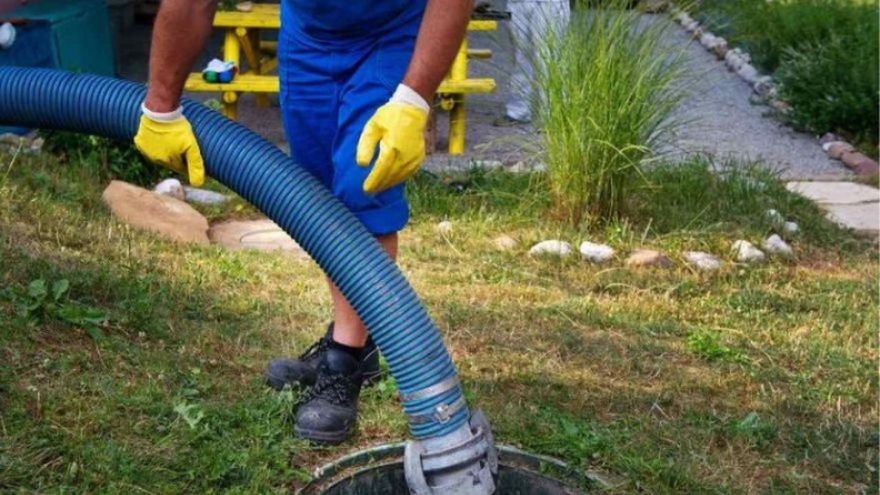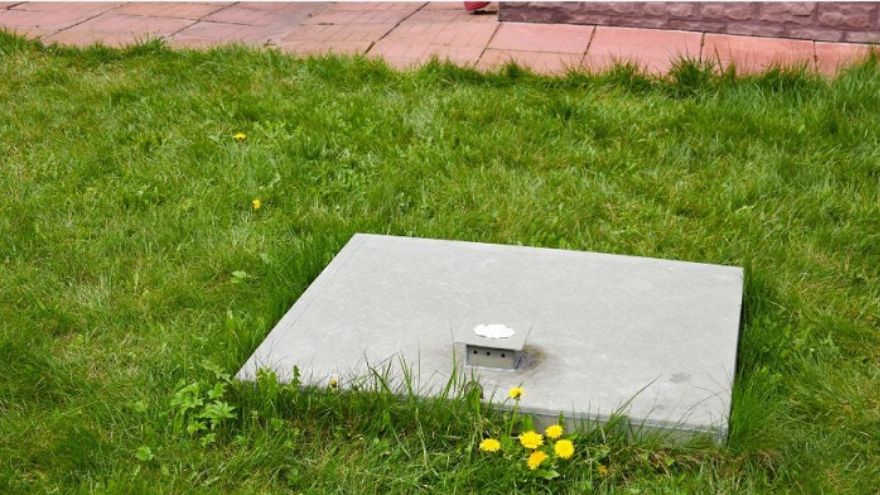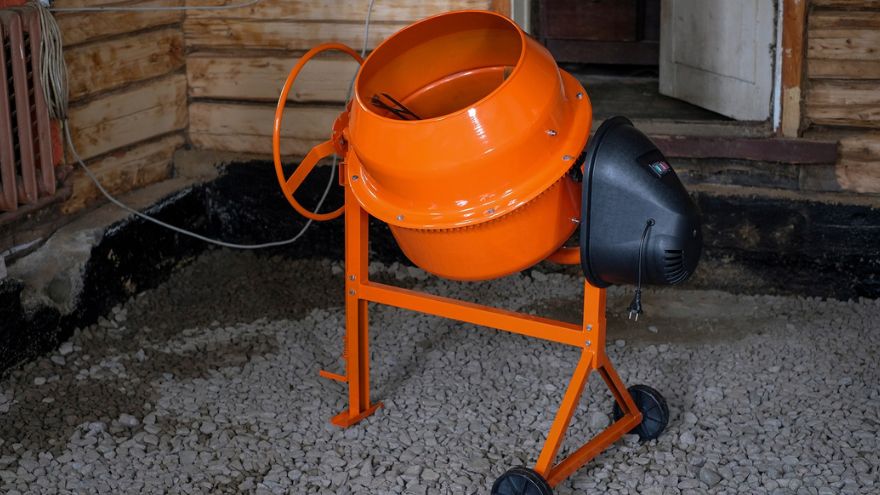A leaking septic tank is a serious threat to the natural environment. Solving such a problem is the responsibility of every tank owner, and failure to do so results in high costs. How to tell if your septic tank is leaking and needs repairing?

From this article you will learn:
- What are the risks of a leaky septic tank?
- How to check if a concrete septic tank is leaking;
- How to effectively seal a tank;
- When is it better to replace an old septic tank with a new one instead of repairing it?
What dangers does a leaking septic tank pose?
In the case of leaky concrete tanks, the threats mainly concern environmental pollution . Impurities entering the soil and groundwater pose a threat to nearby vegetation, animals and residents .
The second issue is legal considerations. According to the regulations, the owner of a leaky concrete septic tank is obliged to seal it as soon as possible . If the user does not take care of the leak himself or ignores it, he or she may face serious financial penalties . Pursuant to the Construction Law, throughout Poland, septic tanks are objects subject to periodic inspections (at least once a year), and their owners must have appropriate documentation confirming that the septic tank on their property is tight and does not pose a threat to the safety of the natural environment .
Leaking septic tanks also involve purely practical and operational issues, primarily higher costs resulting from more frequent sewage disposal .
What are the symptoms of a leaking concrete septic tank?
How can you tell if your septic tank is leaking? This is indicated primarily by deviations in the frequency of sewage disposal. First, it is worth comparing water consumption with the capacity of the tank and determining whether the rate of filling it is consistent with the expected measurements. How to do it? In a simple way.
 Let's assume that your household consists of 4 people and the tank capacity is 8 m 3 . Let us also assume that one person produces on average 150 liters (1 liter = 0.001 m 3 ) of sewage per day. Divide the capacity of the tank (8 in our example) by the product of the amount of sewage produced by one person (0.15) and the number of household members (4) , and you will find out how often the septic tank should be emptied:
Let's assume that your household consists of 4 people and the tank capacity is 8 m 3 . Let us also assume that one person produces on average 150 liters (1 liter = 0.001 m 3 ) of sewage per day. Divide the capacity of the tank (8 in our example) by the product of the amount of sewage produced by one person (0.15) and the number of household members (4) , and you will find out how often the septic tank should be emptied:
8 m 3 /0.15 m 3 x 4 = 13.(3)
A result of just above 13 means that your concrete septic tank should in practice be emptied every 12 days at most. You can suspect a tank leak when the septic tank is removed :
- too rarely, because contaminants seep into the ground instead of remaining in the tank;
- too often because groundwater seeps into the tank, accelerating the rate of filling.
The second problem is more serious because it indicates that the wrong location was chosen to build the tank, and attempts to seal it may prove difficult and ineffective . In extreme situations, the only solution is to change the location of the septic tank.
What to do to check if the septic tank is leaking?
Discovering a septic tank leak on your own is extremely difficult. We are not talking about identifying the problem itself based on observing the filling rate, but about finding the actual place where the leak is occurring. The cause can only be found after pumping out the entire contents of the tank, and even then the owner's options are limited to observation with a flashlight. It is a bad idea to go inside the tank yourself, as it poses a high risk of poisoning and suffocation .
It will definitely be wiser to use the services of specialists. They have equipment that allows them to go down to the tank and inspect it. Sometimes a leak is practically invisible to the naked eye, but if it is confirmed, it still requires intervention . Thanks to modern technological solutions, it is possible to precisely determine the cause of the leak and propose the optimal way to remove it.
How to seal a concrete septic tank? Effective ways
If a septic tank is found to be leaking, the fault must be repaired immediately. The most effective way is to perform permanent waterproofing, which guarantees that the area will be protected against leaks . To minimize the risk, concrete tanks are additionally sealed.
The materials used to seal a leaking septic tank - both from the inside and the outside - are: mineral mortar for concrete and manhole leveling, quick-setting hydraulic cement for filling holes, cold-applied asphalt mortar and two coatings: sealing and protective.
Check out the full offer of septic tanks at the Onninen wholesaler
Sealing the septic tank from the inside
This method is chosen when the fault affects the internal walls to a greater extent. It is much cheaper because it does not require digging up the plot to reach the outer wall of the tank . However, it has some drawbacks.
First of all, the use of sealing materials will probably take away some of the tank's capacity. There is a way to seal it from the inside using a special paint that will save the capacity of the septic tank, but in the long run this will not be a permanent solution. A concrete septic tank is constantly exposed to extreme factors, and the highly corrosive substances present in it will gradually destroy the sealing coating and the treatment will have to be repeated. Therefore, if the durability of the repair effects is important, it is most often necessary to use a special additional screed that will permanently fill the gap or damage to the tank shell .
Sealing the septic tank from the outside
This method generates much higher costs because it requires excavations within the facility. Additionally, if a leak causes groundwater to enter the tank, its location will probably need to be changed (see the section on leak symptoms).
 To seal concrete tanks from the outside, it is necessary to dig a well at least 3-4 meters deep and drain it. Drainage is carried out until the dark spots on the concrete disappear , and in the event of rain, the tank should be protected against precipitation.
To seal concrete tanks from the outside, it is necessary to dig a well at least 3-4 meters deep and drain it. Drainage is carried out until the dark spots on the concrete disappear , and in the event of rain, the tank should be protected against precipitation.
The repair area is thoroughly cleaned of loose concrete, dirt, moss and salt deposits, and the exposed metal parts of rust, and then covered with an anti-corrosion solution. In places of seams and cracks, it is a good idea to make a recess (approx. 2.5 cm) to increase the contact surface of the concrete with the sealant.
For external waterproofing of wells, bituminous materials in rolls and bituminous masses are most often used. The stages of work include:
- applying foundation,
- laying cement mortar (or cement-sand composition with the addition of PVA glue in a ratio of 5 to 1),
- re-priming the surface,
- tar covering,
- positioning of waterproofing rolls (minimum 3 layers),
- resin protection (mastic),
- filling with earth and creating a blind area around the well.
Sealing an old septic tank or building a new one?
The decision on the profitability of repairing an old septic tank is made based on an inspection. During an inspection of the tank interior to locate leaks, a team of experts examines and assesses its structure. The degree of fecal contamination of the concrete determines whether it is worth sealing the tank or replacing it with a new one .
Sealing an old septic tank is rarely effective and profitable. Over time, the concrete structure degrades and the unfavorable changes become more and more extensive. Tank leakage is sometimes also related to design defects or outdated technology used during construction . In addition, subsequent internal repairs will constantly reduce the capacity of the septic tank. If specialists find that the leakage of the facility seriously threatens the environment and its repair will be ineffective, you must decide to purchase a new one. In the long run, this solution will turn out to be cheaper anyway.
When choosing a new septic tank, choose tanks from proven, reputable manufacturers that guarantee tightness and resistance to extreme conditions. You will find them in our store:
- Tight PEHD CARAT XL 8500L septic tank - the highest quality tank that can withstand the load of car and truck traffic, resistant to groundwater up to half the height of the tank;
- Tight PP CARAT 4800L septic tank - a tank made of PP material using the injection method, with a low own weight, suitable for installation in difficult ground conditions;
- Tight PEHD CRISTALL septic tank - easy to install septic tank made of PE-HD (high density polyethylene), whose covers can withstand the load of pedestrian and car traffic (after purchasing a special cover).
Septic tank leaks are an issue that requires quick and decisive action. However, it is worth making a well-thought-out decision and not "reanimating a corpse", guided by the criterion of the lowest possible repair costs. If replacement turns out to be the only solution, we advise you not to delay, because postponing the inevitable will only generate unnecessary expenses in the end.
Check out the full offer of septic tanks at the Onninen wholesaler